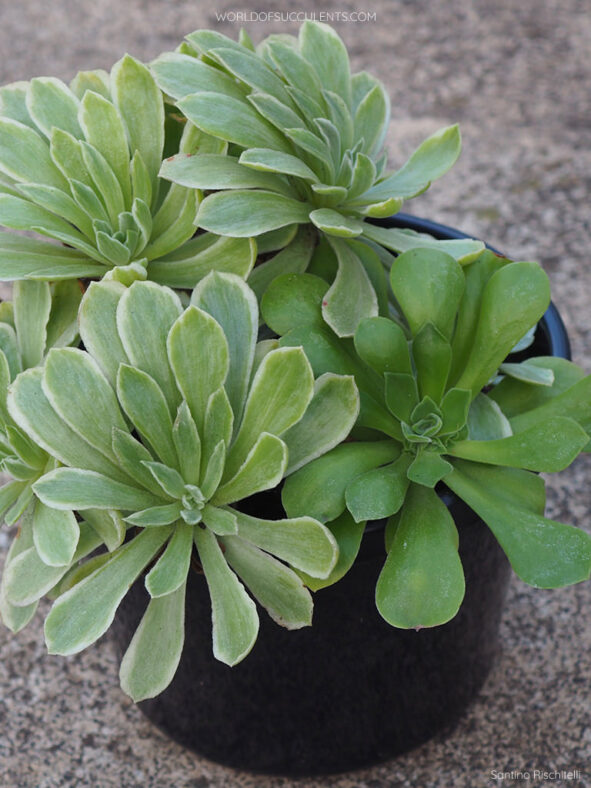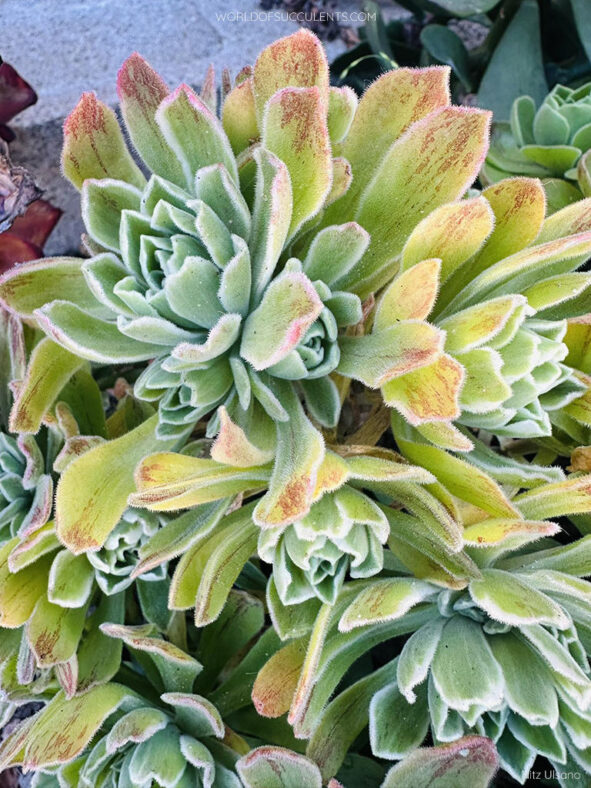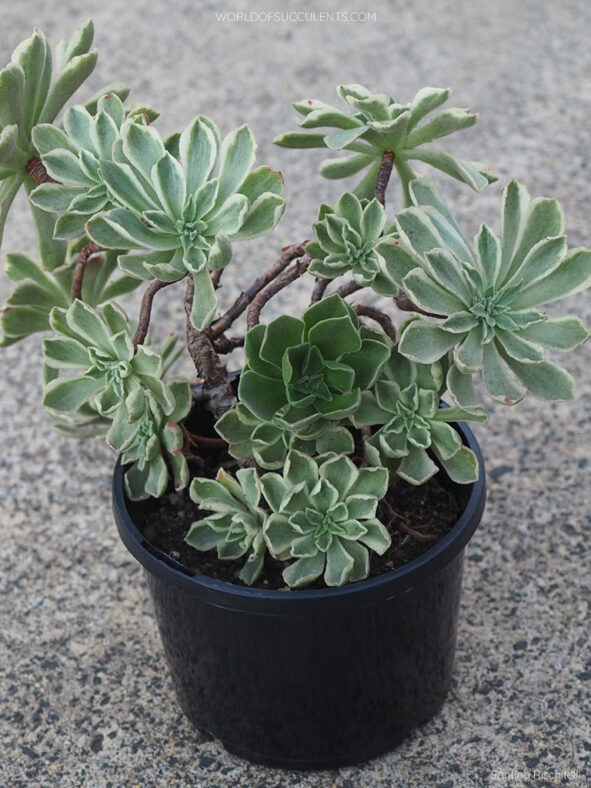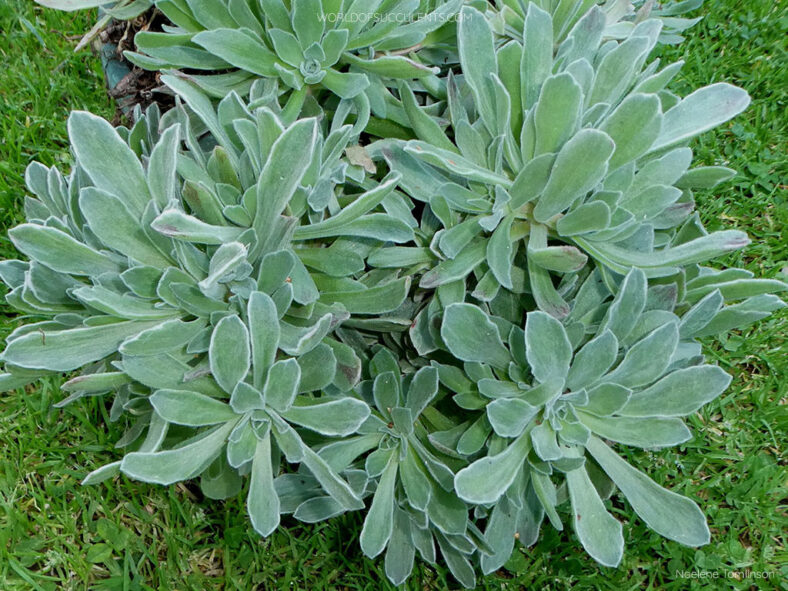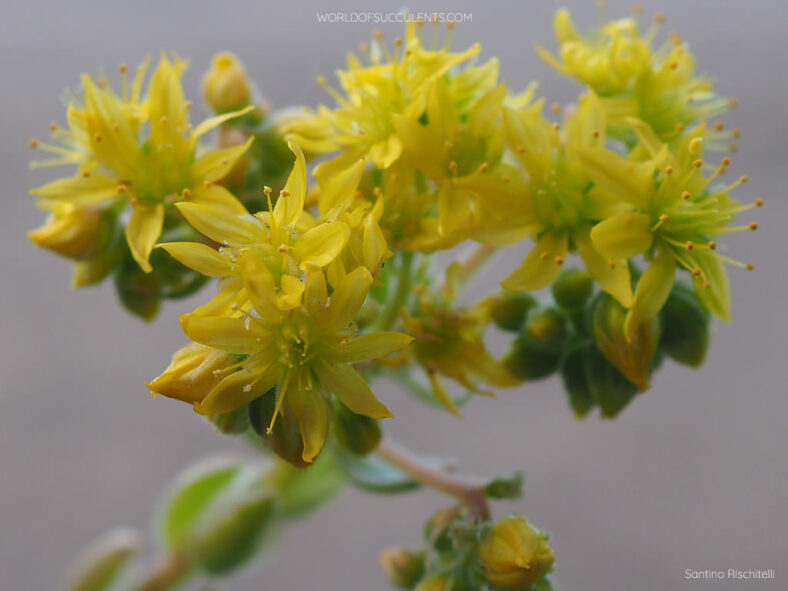Aeonium 'Ballerina' is a charming small succulent with variegated leaves. According to Rudolf Schulz, it is most likely a hybrid resulting from а cross between Aeonium glutinosum and possibly Aeonium canariense. This plant is sometimes sold as Aeonium goochiae 'Ballerina'.
Scientific Name
Aeonium 'Ballerina'
Synonym(s)
Aeonium 'Frosty'
Scientific Classification
Family: Crassulaceae
Subfamily: Sempervivoideae
Tribe: Aeonieae
Genus: Aeonium
Origin
The origin of Aeonium 'Ballerina' is unknown.
Description
Aeonium 'Ballerina', also sold as Aeonium 'Frosty', is a succulent shrublet with short branches that bear rosettes of grayish-green, somewhat sticky leaves adorned with white margins and silver streaks. The plant can grow up to 8 inches (20 cm) tall, while the rosettes can reach a diameter of 4 inches (10 cm). The shape of the leaves can vary, and occasionally, the plant may revert to a non-variegated form. When exposed to intense sunlight, the leaves develop red markings near the tips.
In late winter and spring, Aeonium 'Ballerina' produces dense clusters of star-shaped flowers with hairy sepals and yellow, lance-shaped petals. The flowers appear on leafy stalks that can grow up to 12 inches (30 cm) long. It is important to note that this plant is monocarpic, meaning that the rosettes die after flowering.
Forms of Aeonium 'Ballerina'
- Aeonium 'Ballerina Reversion' (usually sold as Aeonium 'Goblin')
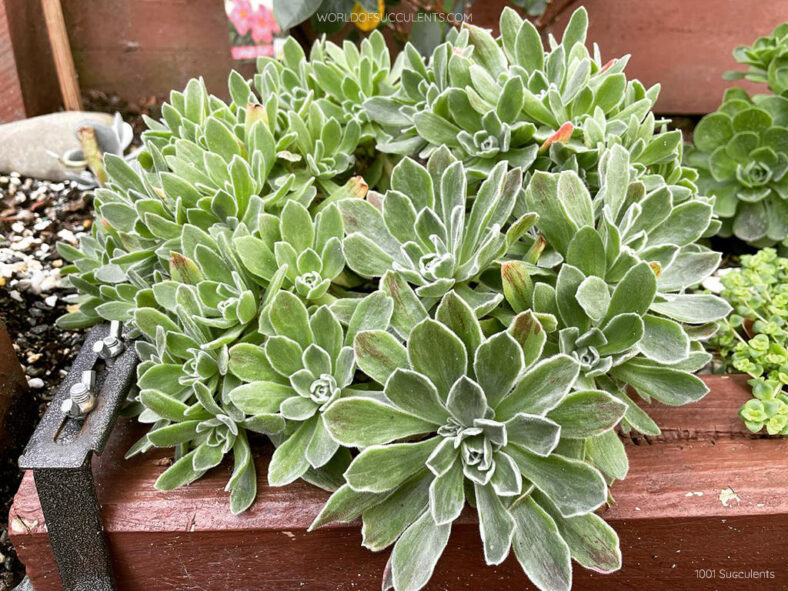
How to Grow and Care for Aeonium 'Ballerina'
Light: Aeonium 'Ballerina' thrives in full sun to partial shade, but in summer, light shade may be necessary, especially during the hotter afternoon hours. When growing indoors, ensure the plant receives as much bright, indirect light as possible to prevent it from becoming leggy and stretched.
Soil: Unlike most succulents, this plant requires sandy loam or regular potting soil amended with perlite. Avoid placing it in premade soil mixes designed for succulents, as they typically provide less moisture than this plant needs.
Temperature: Aeonium 'Ballerina' does not like hot or dry weather, so it may go dormant in summer. It grows best in USDA Plant Hardiness Zones 10a to 11b, with average minimum winter temperatures ranging from 30°F to 50°F (- 1.1°C to 10°C).
Watering: Water the plant thoroughly in the spring and fall, allowing the soil to dry between waterings. During the winter, water it more sparingly. Although this plant requires more water than most succulents, too much moisture can lead to root rot. Stop watering except in arid conditions during its summer dormancy.
Fertilizing: Apply a water-soluble fertilizer diluted to half-strength during the growing season to stimulate growth and improve the plant's appearance.
Repotting: If you're growing Aeonium 'Ballerina' in a container, repot it every 2 to 3 years in the spring. Choose a container with drainage holes to prevent root rot from occurring.
Propagation: This plant is easily propagated by stem cuttings. Take cuttings during the growing season and allow the cut ends to dry for several days before planting.
Learn more at How to Grow and Care for Aeonium.
Toxicity of Aeonium 'Ballerina'
Aeonium 'Ballerina' is considered non-toxic, making it safe for children and pets to grow around.
Links
- Back to genus Aeonium
- Succupedia: Browse succulents by Scientific Name, Common Name, Genus, Family, USDA Hardiness Zone, Origin, or cacti by Genus
Photo Gallery
Click on a photo to see a larger version.
